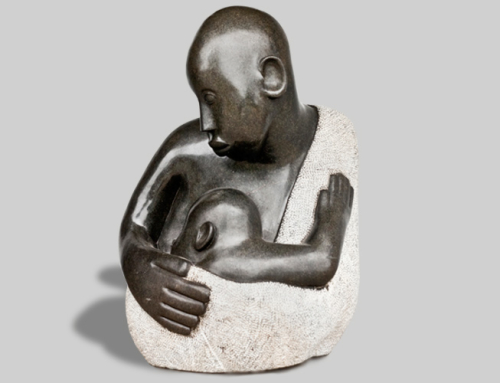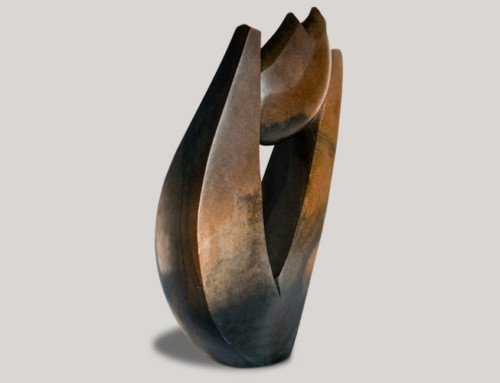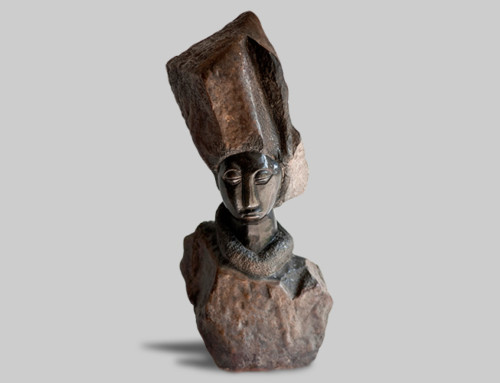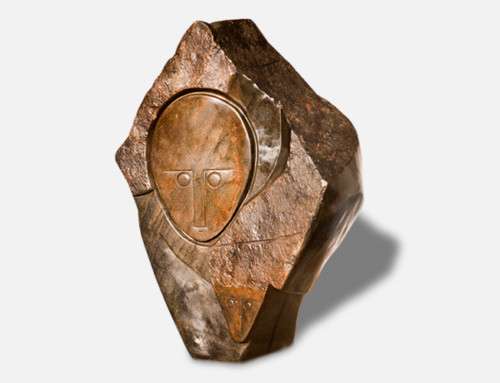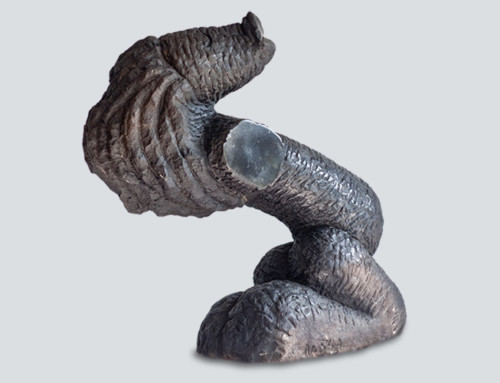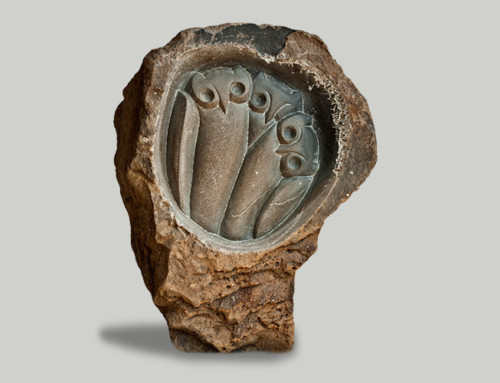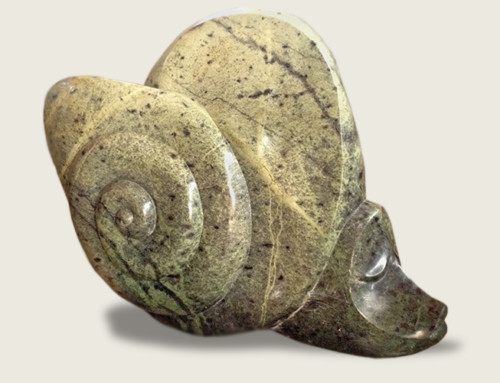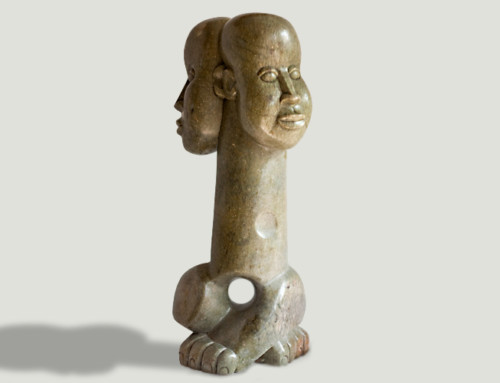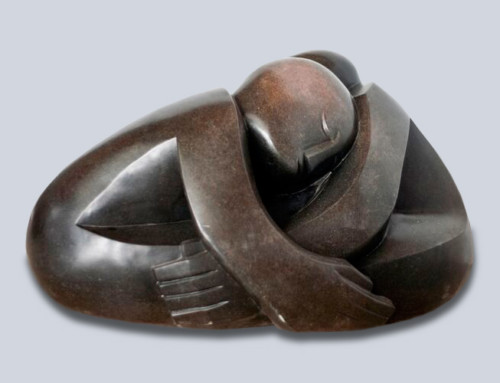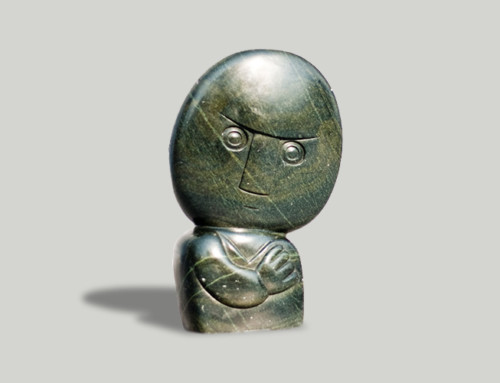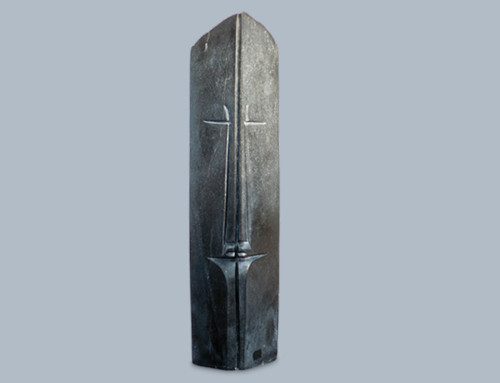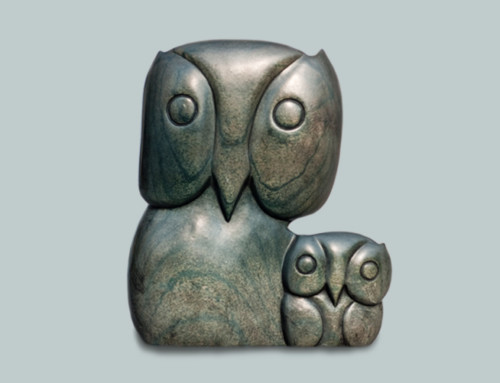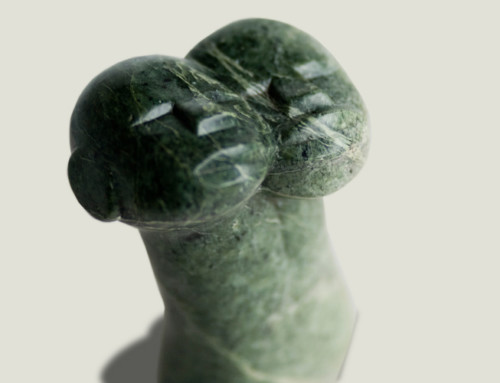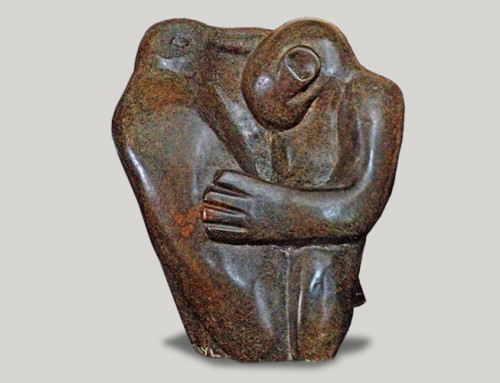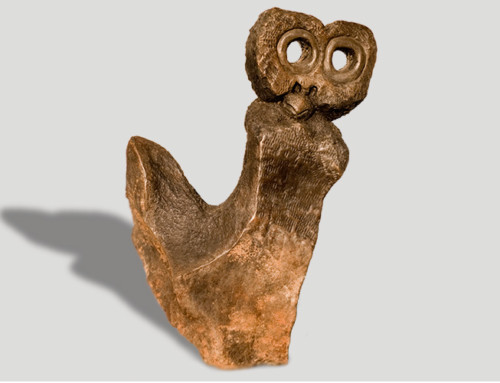EDRONCE RUKODZI
Edronce Rukodzi was born in 1952 in the Guruve District, an area that rivals Inyanga as a source of Zimbabwe’s creative talent. His interest in sculpting began in 1974 when he visited Henry Munyaradzi, a relative, at the Tengenenge sculpture community. For the next ten years, Rukodzi sculpted only in his spare time. Since 1985, however, he has worked full time as a sculptor and has rapidly established himself as an original and creative talent among Zimbabwe’s second generation of Shona sculptors.
Despite having been immersed int the modern world and its problems and issues as a senior trade union official, Rukokzi retains close links with his rural background and the Shona society to which he belongs. (He still lives and works at his rural home in Guruve.) As with many Shona sculptors, it is the timeless aspects of Shona society and tradition that inform his work.
His human figures typically have leaf-shaped, pointed heads with crescent-shaped slits for eyes. the heads almost always are enlarged in proportion to the body. This exaggeration of the proportions of the head is a common feature of Shona sculpture and, indeed, of African sculpture in general. Sculpturally, the artist is indicating the importance of the head as the place where the spirit resides. Rukodzi’ leaf-shaped, pointed heads also signify those who live in the world of spirtis–people who inhabit the bush and are hidden from view by a covering of leaves.
Like other Shona sculptors, Rukodzi can best be understood in the context of his own society–its customs, traditions, and beliefs.

